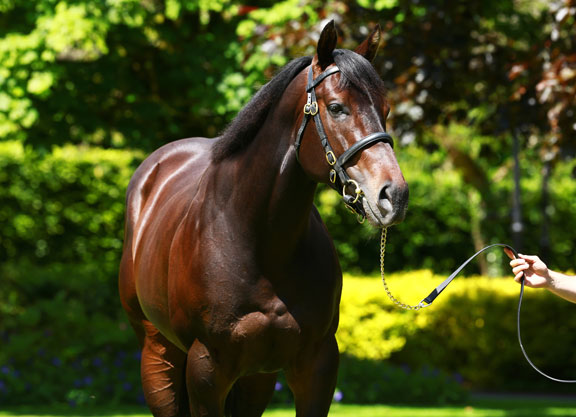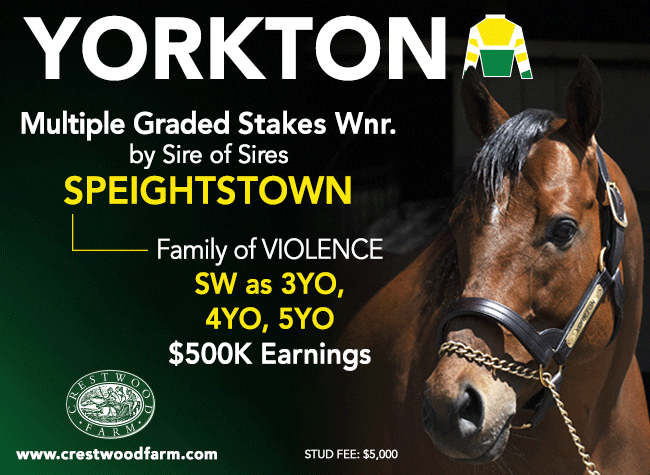By Kevin Blake
The bloodstock business is truly extraordinary. Despite how few new sires ultimately become commercial successes, it is remarkable to witness the untethered enthusiasm, excitement and speculation which greets each new batch of unproven stallions that retire to the breeding shed every year. Despite the relatively unattractive odds involved, the majority of players in the game dream of being on the right side of the next successful sire and are willing to back their judgement and support these unproven sires in the hope of striking gold.
Thus, with the first runners of the latest bunch of new sires only a couple of weeks away from the racecourse, now is as good a time as any to search for statistical hints as to what might prove to be the pick of the new sires based in Great Britain and Ireland.
One thing that must be said is that it is a competitive year for sires with their first runners in 2018. There are 14 stallions based in Great Britain and Ireland that have 75 or more 2-year-olds to represent them. For the sake of comparison, there were 10 such stallions in 2017, 13 in 2016 and eight in 2015. Also worth noting is that there is more depth in the upper end of the market than is often the case, with five individual stallions having covered their first crop at a published fee of €20,000 or higher.
The method used to assess the prospects of the first runners of various stallions is an interesting subject. As always in the bloodstock world, there will be no shortage of subjective opinion based on what observers have seen with their own eyes at the sales and on the gallops, but this piece will seek to make a statistics-based assessment. While statistics based on yearling sales results are far from cast iron given the potential for some of the results to not be quite as they seem, there is always plenty of interesting information to be extracted from the results.
The chosen method of assessment in this piece is to express the average and more significantly the median price achieved by a sire's progeny at the yearling sales in relation to their sire's nomination fee. This can give an idea of how they performed in the context of the expectation implied by their nomination fee. However, that methodology undoubtedly favours sires with lower nomination fees, so it is fairer to all to include a set figure to account for the costs up to the point of sale as a yearling.
As has been discussed in previous sales analysis pieces, what this figure should be is a subject of great debate given the differing circumstances of the horses that sell at yearling sales. Based on feedback from industry figures over the years, the number I have decided to use to best reflect an industry-wide average is 8,000gns.
It is also worth noting that when I converted the 2015 nomination fees of Irish-based stallions from Euro to Guineas for ease of comparison, I used the average exchange rate from Mar. 1, 2016 (78p to €1) to best reflect the cost to the breeder at the average time of payment. With Sterling having weakened against the Euro between then and the yearling sales in 2017 (88p to €1 on Oct. 1, 2017), British-based stallions on this list are disadvantaged by their stud fee being approximately 13% or so more costly than it would be at October 2017 exchange rate.
With all that in mind, statistical analysis of this nature will never be fully reflective of the situation, but it can certainly help to cut through the bluster and give a good indication of how the market really received the first yearlings of these new sires.
So, what do the numbers say?
Based on this analysis, the headline horse is without question No Nay Never (Coolmore). While the small number of his first crop that were sold as foals didn't create too many waves in 2016, it was clear from the earliest yearling sales last year that he was going to be one of the most talked about new sires in Europe and his results only became more impressive as the yearling sales progressed.
In terms of those that led the way for him, no fewer than 10 of his yearlings made 200,000gns or more. The pick of those by some margin was the colt out of Muravka that made 850,000gns at Tattersalls Book One, with the Japan-based JS Company outbidding MV Magnier for him. The same sale was the scene of another highlight for the sire with the filly out of Hureya being bought for 420,000gns by Al Shaqab Racing. The Arqana Deauville August Yearling Sale saw other strong results for No Nay Never too, with colts out of Jessica Rocks and Chaibia making €480,000 and €400,000, respectively.
For many, the trainers that a sire's progeny end up with is just as important a factor as their sale prices and in the case of No Nay Never's progeny, they won't lack for opportunity having been sent to some of the best trainers in the world. Most interestingly, Aidan O'Brien has six colts by No Nay Never in his care including the aforementioned colt out of Chaibia, whilst Wesley Ward is training five of his offspring. In terms of those mentioned above that made significant prices, the filly out of Hureya is now with Richard Hannon, while the colt out of Jessica Rocks is with Jeremy Noseda.
With No Nay Never being by Scat Daddy and having won the G2 Norfolk S. at Royal Ascot as a juvenile, his progeny can very much be expected to be sharp. While the more expensive offspring of first-season sires don't tend to be rushed by their trainers to appear in the early part of the season, it will be expected that he will have had plenty of representatives by the mid-point of the season. The fact that there are 12 sires with as many or more 2-year-olds on the ground than him will make it a tough battle for him in the race for the title of champion first-season sire, but regardless of where he finishes in that table, hopes will be high that he will justify the substantial faith the yearling buyers put in his progeny.
The two most high-profile first-season sires this season are Kingman (Banstead Manor) and Australia (Coolmore) and both of them came out well in this analysis. Of course, they have contrasting profiles, with Kingman's progeny expected to be much sharper types than the Australia's, but it will be fascinating to watch how it pans out for both of them in 2018.
Of the less expensive first-season sires in the table, Moohaajim (Rathbarry) caught the eye with the prices that the small number of his foals that sold realised in 2016 and the results that his yearlings secured last year again catch the eye. Four of his progeny realised over 50,000gns, with the most expensive one being the colt out of Bahati that was bought by Shadwell for £85,000 at the Goffs UK Premier Yearling Sale. While he will have just 32 2-year-olds to represent him in 2018, it will be well worth watching how they fare, as his sale results have suggested that they could well overachieve.
Another Rathbarry inmate that is in a similar situation is Xtension. He has just 24 2-year-olds to represent him this year, but there were some eye-catching results amongst the 10 of them that sold as yearlings. Chief amongst them was the £115,000 realised by the colt out of Park Glen, the first foal out of the mare.
Not a subscriber? Click here to sign up for the daily PDF or alerts.







